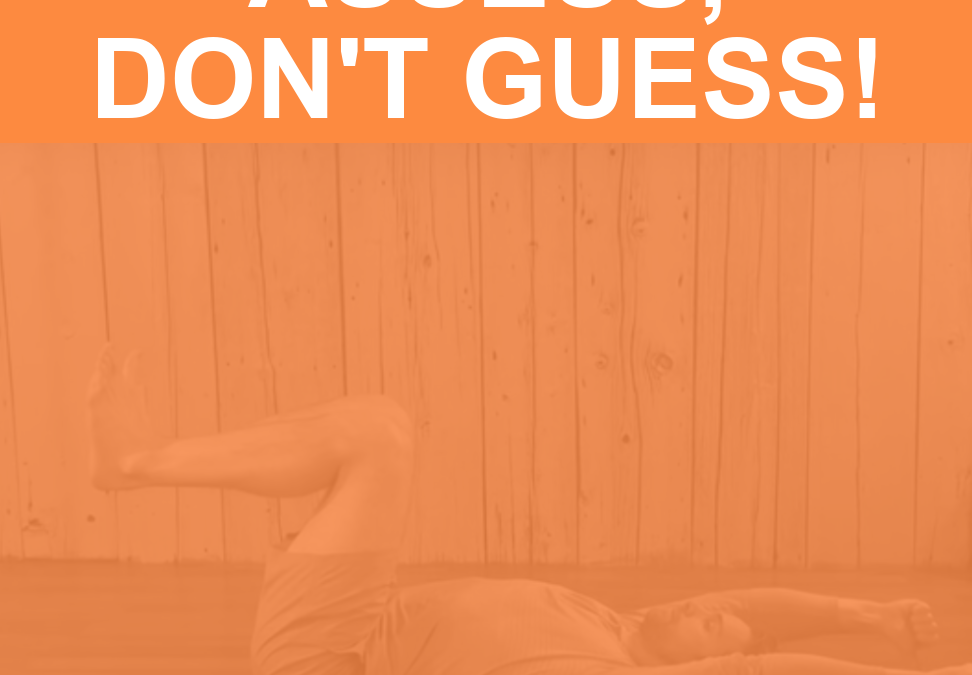As personal trainers we must take our due diligence to keep our clients safe and injury-free in tandem with helping them reach their goals. Before your new client picks up so much as a dumbbell, a savvy trainer will take the time to perform various performance and postural assessments. An assessment is an opportunity to see how well a new client moves. Do they have pain or restrictions? Do they have to compensate one joint in order to move another to complete the movement? You want to make sure you design the right exercises and program based on your initial assessment. I always say, “Assess, don’t guess.”
There are different assessments you can use. I have found at the very least to look at three things to assess and where to start with a brand-new-to-you cleint:
1- Can they touch their toes?
2-Can they touch the floor in a supine position without compensation?
3-Can they squat?
Performing Each Assessment
1. Toe touch– Have the client keep their legs straight (not locked out) and attempt to bend down to touch their toes. If they can do this, then they meet one prerequisite to deadlift after you teach them how. If they can’t find out if they have tight hamstrings or lack of mobility in their hips. Starting a client with a deadlift movement without being able to this would be a bad idea and will lead to injury.
2. Supine floor touch– Start this upper body assessment by having your client lay on their back with legs up, knees and hips bent at 90 degrees. Have client raise there arms up and back attempting to touch the floor behind them with thumbs. You’re looking for the client’s back to arch and lift off the floor, bending at the elbows, or inability to reach the floor at all (even without the former compensations). Failure to reach the floor without compensation should be an indication to not start overhead pressing (or pulling down) without corrective work.
3. Squat– There are many potential lower body postural dysfunction patterns that can be identified using the squat. With their arms crossed elbows out, have your client stand shoulder width apart. Start off by sitting the hips down and back. Watch for compensations from knees caving inwards, feet moving, back rounding. This drill will show you what should be addressed and avoid loading until bodyweight squat is mastered.
*For a more nuanced and detailed assessment of many possible dysfunctions, master the Overhead Squat Assessment.
After you Assess
Knowing where a client stands with their ability (and lack of ability) when starting out is crucial. Injuries can be avoided by simply taking 5 minutes, that’s really all it takes. Plus, the fact that you care enough to evaluate first shows clients that you really have their best interest at heart and you know what you are doing.
There are many different assessments that can provide critical information about what your client can do, or alert you to potential issues that might arise in the future if left unaddressed. A wise and prudent trainer will assess, never guess.
[sc name=”masterfitness” ][/sc]


